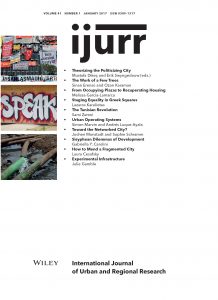One of the most influential ideals for constructing and managing cities and infrastructures worldwide is that of the ‘networked city’. This ideal refers to the technological design and morphology of cities integrated and ordered by infrastructure networks and to a specific model in the operation, use and planning of infrastructures. Engineers, planners and public health officials have aspired to align with this circulating ideal of urban modernity, hygiene and rationalization of nature in (re)producing cities worldwide. Like many cities in the global South, Dar es Salaam cannot be characterized by universal access to centralized water and sewerage networks. While formal institutions, planning documents and strategies reflect significations, as well as organizational and planning models of a networked city, its urban environments are shaped by hybrid arrangements manifesting unequal access to water and sanitation services. We build on postcolonial critique in urban studies and science and technology studies to inquire into this contradiction by addressing the translation of the ideal of the networked city in Dar es Salaam. Our objective is to uncover the negotiations over the translation of this hegemonic model, and to delineate the scope of creativity in reinventing alternative urban modernities that defy simplistic notions of technology transfer.
Details
Written by:
Jochen Monstadt & Sophie Schramm
Digital Object Identifier (DOI)
10.1111/1468-2427.12436
About DOI

